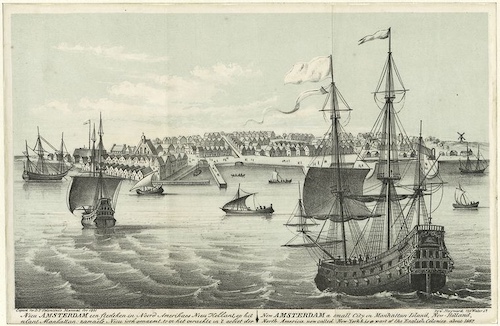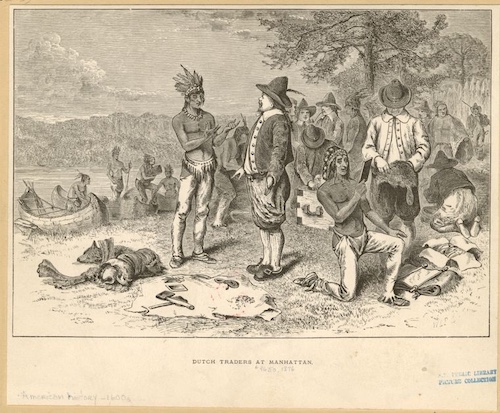
Before the Dutch arrived, Indigenous nations such as the Mohawks, Mahicans, and Munsees had lived in the region for many centuries. The Dutch made trade agreements with these groups and purchased land, including the island now called Manhattan, from the Munsees. When Henry Hudson explored the river in 1609, he met the Mahican people, who called the river Mahicannituck.
The Mohawks and Mahicans lived near the future site of Fort Orange (now Albany), with the Mohawks to the west and the Mahicans to the east. Over time, fighting among Indigenous groups, partly caused by competition over the fur trade and land, led to the Mohawks pushing the Mahicans out of some areas. By the 1700s, many Mahicans had moved to Connecticut or joined the Munsees in southern New York.
Trade between the Dutch and Indigenous peoples focused mainly on beaver furs. Early on, the Dutch traded mostly with the Mahicans, but by the 1620s, the Mohawks controlled much of the fur trade. Conflicts broke out between Indigenous groups and with the Dutch, including a war near Albany in 1628. Diseases brought by Europeans, such as smallpox, reduced Indigenous populations. By the mid-1600s, the beaver population decreased, affecting the economy of the region.
The Dutch colonists expanded their settlements, built forts along rivers such as the Hudson, Delaware, and Connecticut, and began farming on lands used by Indigenous peoples for hunting and gathering. These changes placed pressure on natural resources and led to increased tensions. The growing presence of colonists and control over land made peaceful relations difficult, contributing to conflicts and the displacement of Indigenous groups.
In 1664, English warships surrounded New Amsterdam. With few defenses in place, the Dutch surrendered the colony without a fight. The English renamed the colony New York, but many Dutch customs and cultural influences remained in the area. After the English took over New Netherland, Mahican leaders sought peace but found that English officials favored the Mohawks. This caused further tensions, and many Mahicans relocated to Massachusetts and later to Wisconsin.
The Dutch settlement legacy endured even under English rule, influencing the development of New York. The land system and the cultural impacts of Dutch settlers shaped the colony for years, leaving lasting effects on both the people and the land.

